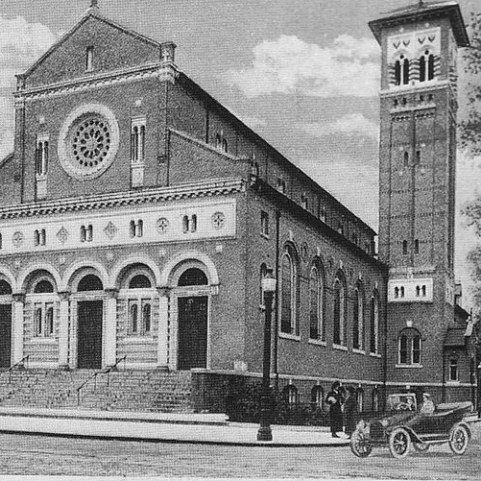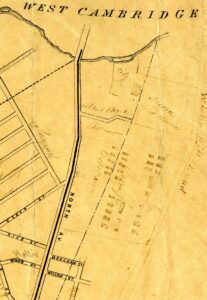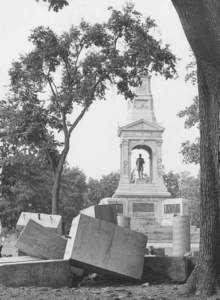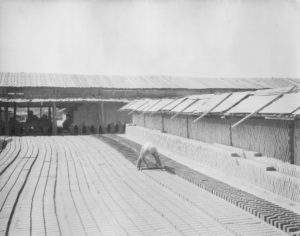
St. John the Evangelist’s embrace of newcomers turned it into a cornerstone of North Cambridge
Above image: St. John’s Parish on Massachusetts Avenue in North Cambridge circa 1910. (Photo: St. John’s Church)
By Beth Folsom
North Cambridge was one of the later Cambridge neighborhoods to be developed, retaining its almost rural character well into the 19th century. Because the area was less densely populated than other neighborhoods in the city, the Roman Catholic residents of North Cambridge and West Somerville were incorporated into St. Peter’s parish on Concord Avenue. The distance from their homes to the church was considerable, and the Rev. John Flatley, the pastor of St. Peter’s, feared that many – especially children – were not attending Mass and religious education classes as regularly as they might if there were another parish closer to home.
Adding to the push for a new parish was North Cambridge’s industrial development in the second half of the 19th century, especially the clay pits, brickyards and pottery producers that took advantage of the area’s clay-rich soil. Many of the immigrants who worked in these industries were from Catholic backgrounds, especially Irish and French Canadian Catholics, and as the neighborhood developed, these workers created a community near their workplaces.
In 1890, to meet this need for an additional parish closer to the growing North Cambridge population, Flatley bought a plot of land on what was then Spruce Street (now Rindge Avenue), followed by the purchase of an adjacent plot the next year. When the building project was complete, St. John’s opened as a separate parish in 1893 under the pastorate of the Rev. John Halloran. Over the next several decades, the church grew and prospered, adding a K-12 school that remained part of the parish until it was transferred to Diocesan control in the 1950s.
After a fire in 1905 that destroyed the original building, the church was rebuilt at its current location on Massachusetts Avenue. Since that time, St. John’s has been a thriving parish, with many of its members coming from the strong Irish and French Canadian communities that continue to have deep roots in the neighborhood. As the demographics of North Cambridge have changed, St. John’s has adapted and welcomed arrivals to Cambridge, especially Haitian-Americans, whom the church serves through its Haitian Ministries.
History Cambridge met members of the parish during a recent visit to St. John’s. Talking with parishioners before and after weekend Masses, we shared our upcoming programs centered on North Cambridge and heard stories from lifelong residents and new arrivals about their experiences in the parish and the neighborhood. We are eager to share the resources we have about North Cambridge – photographs, newspaper articles, artifacts – but we also recognize that there is much we don’t know about the neighborhood and its history. Opportunities such as our visit to St. John’s give us the chance to connect with residents and hear the stories they want to share and the questions they have about their community that we can investigate together.
History Cambridge welcomes visitors (and submissions!) to our North Cambridge History Hub, and we invite you to sign up for our newsletter to stay up-to-date about our programs and events as we continue with our Year of North Cambridge.
Beth Folsom is programs manager for History Cambridge.
This article was originally published in our “Did You Know?” column in Cambridge Day.




